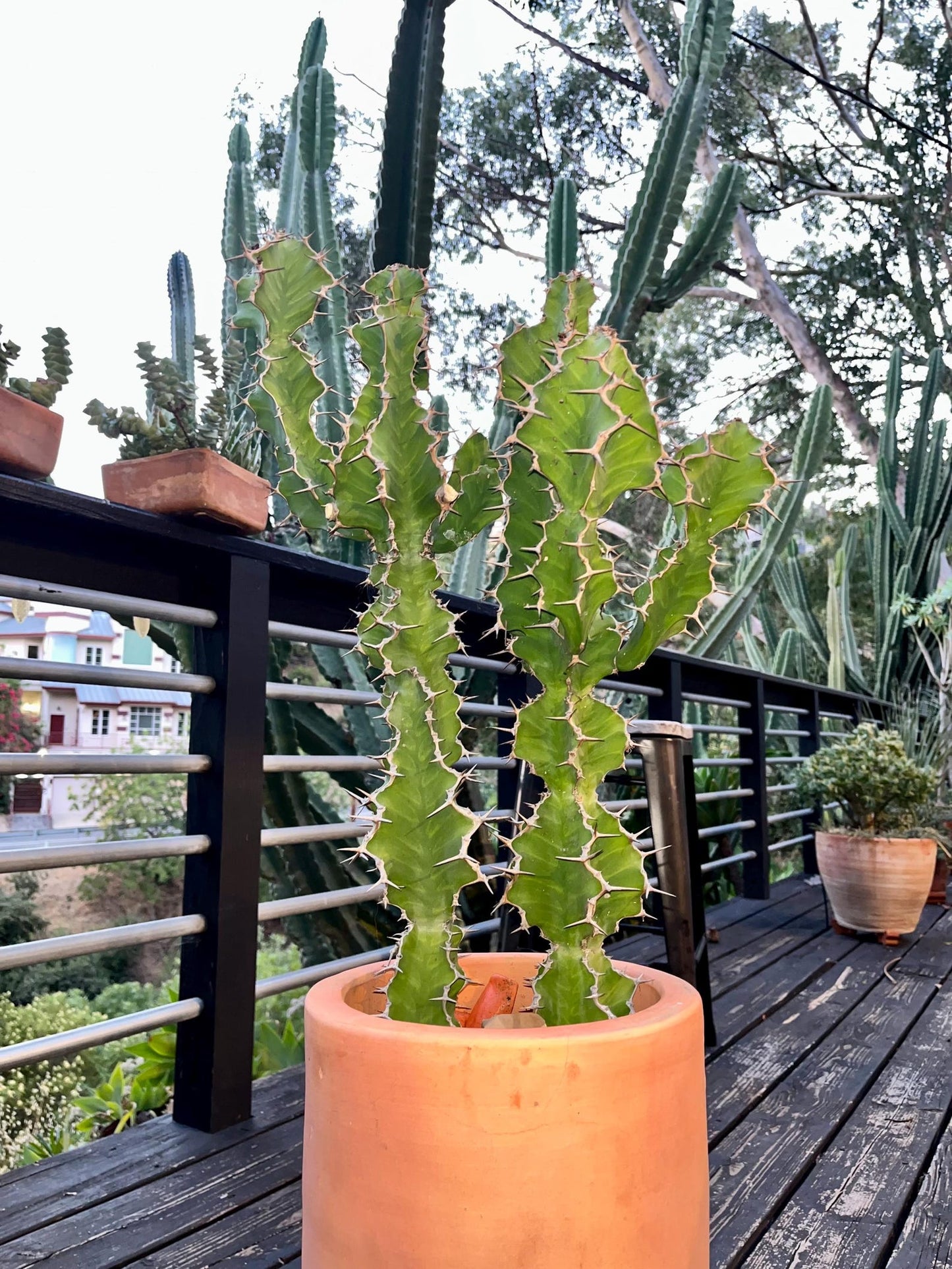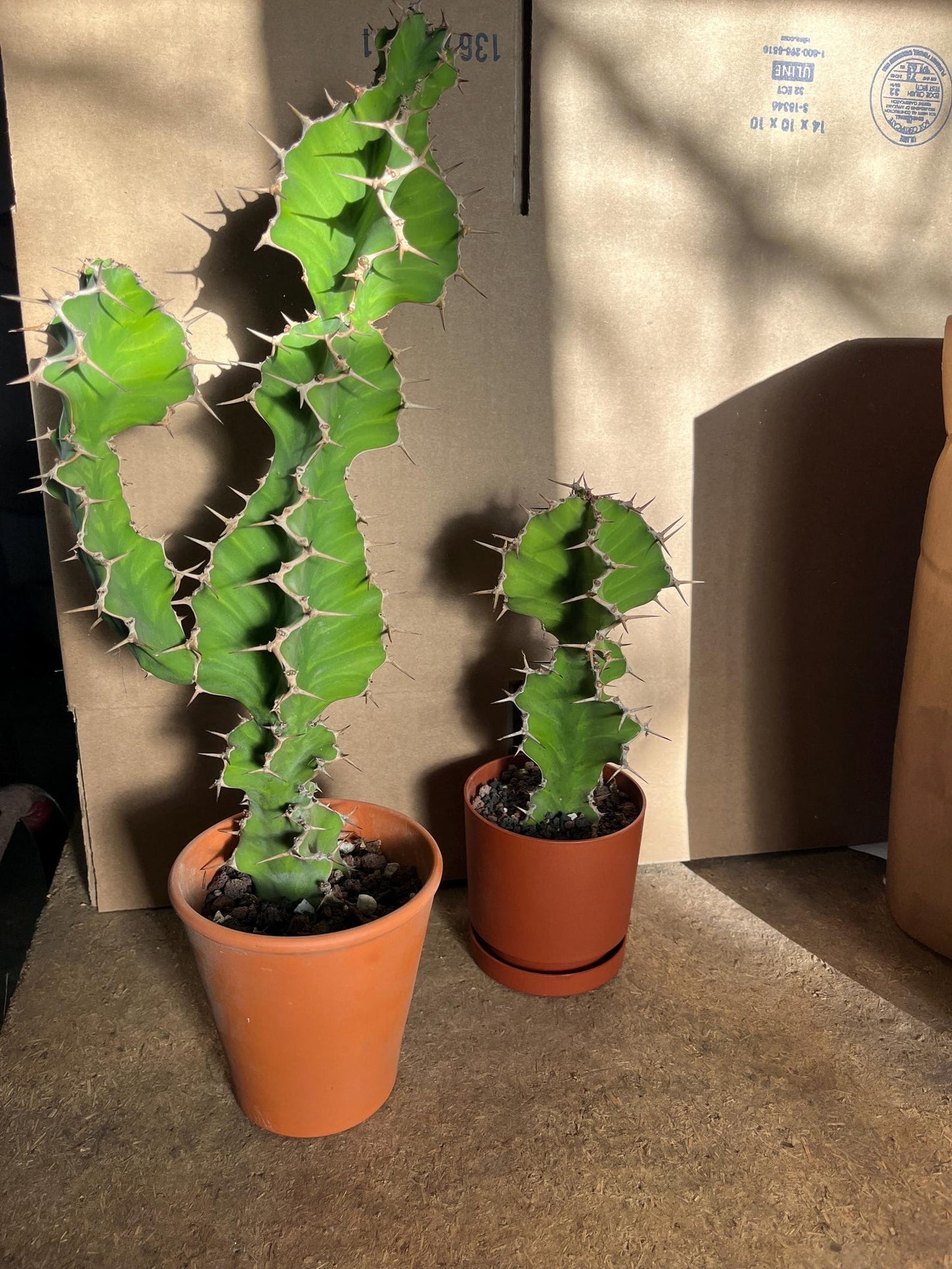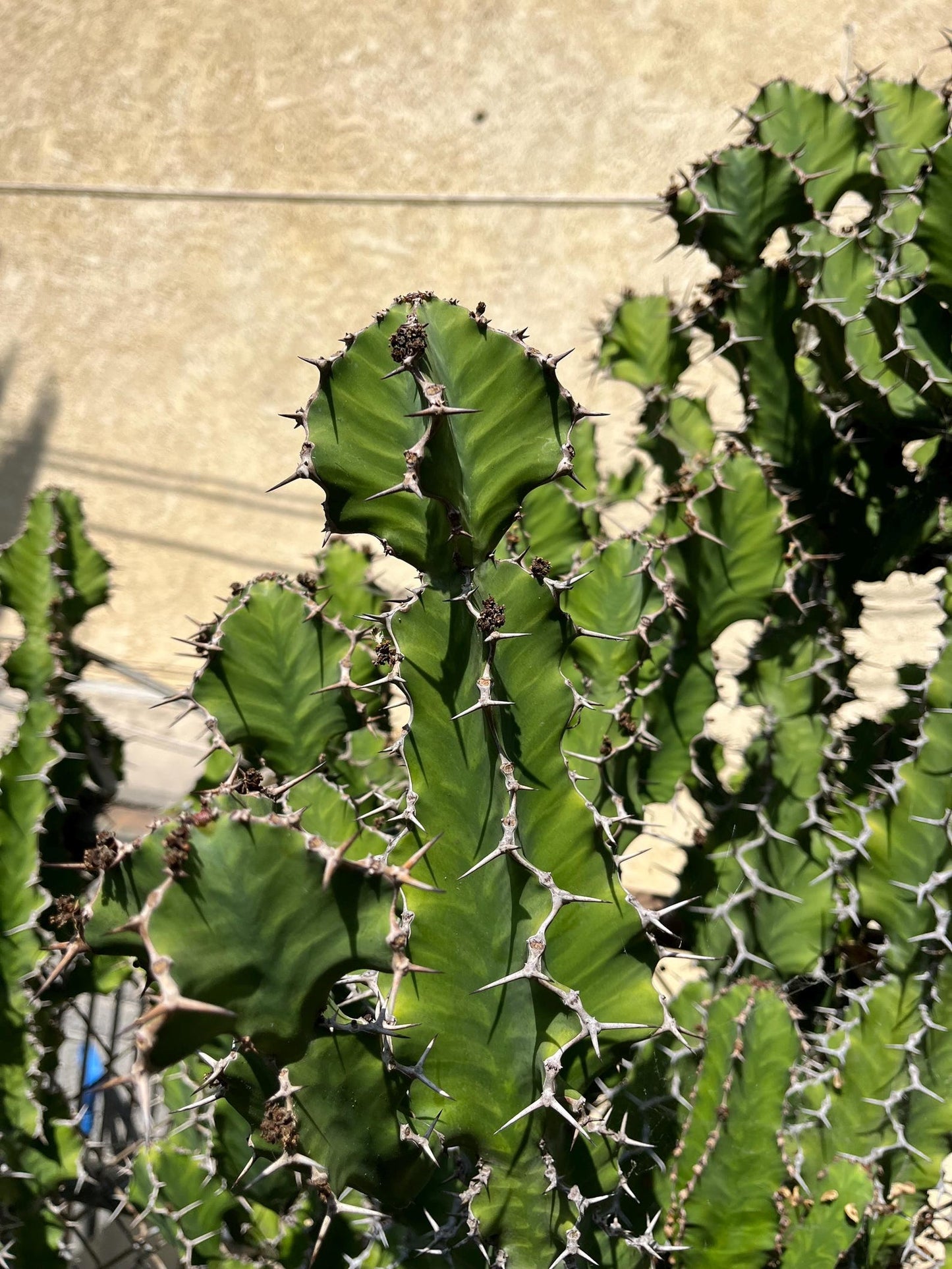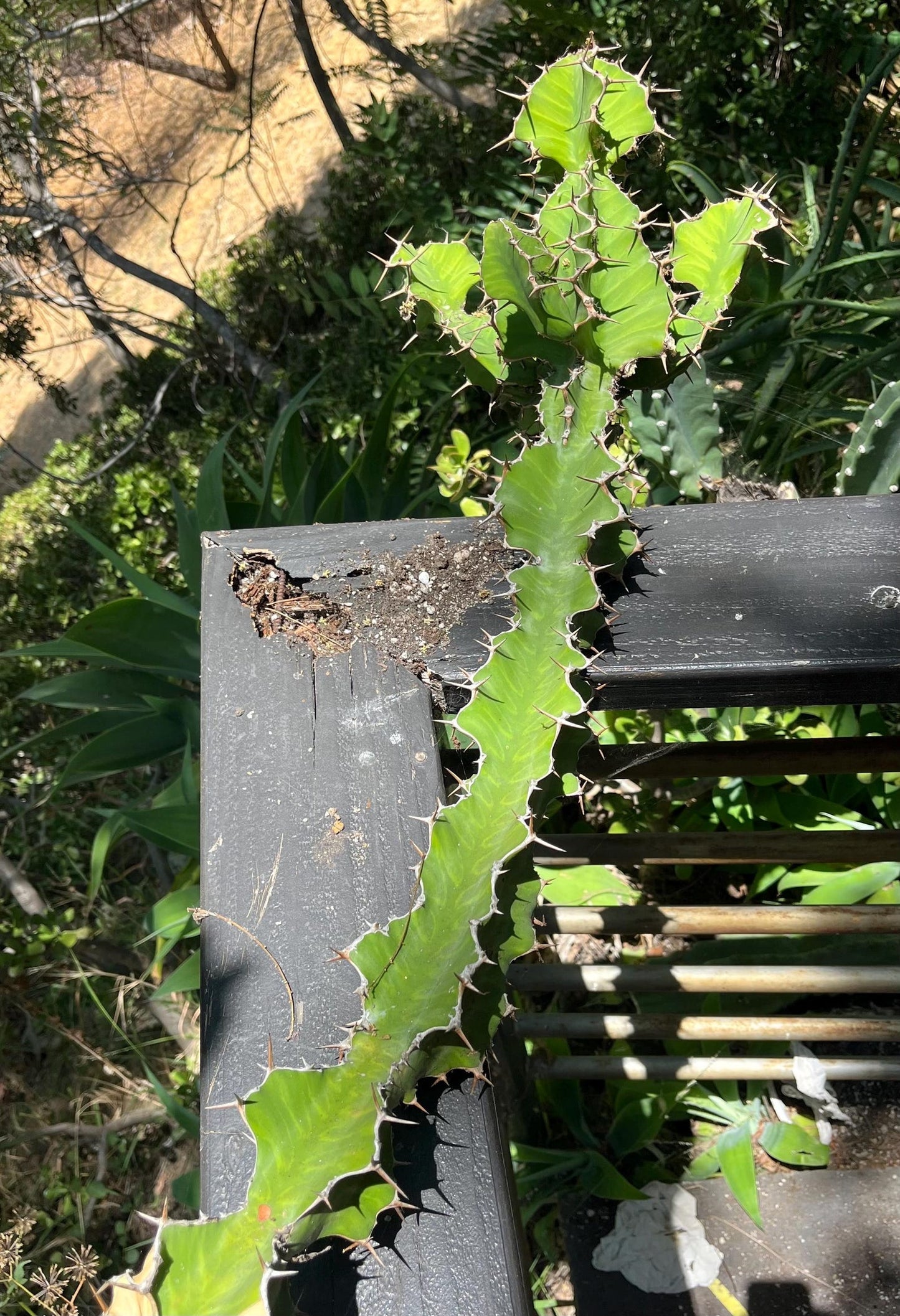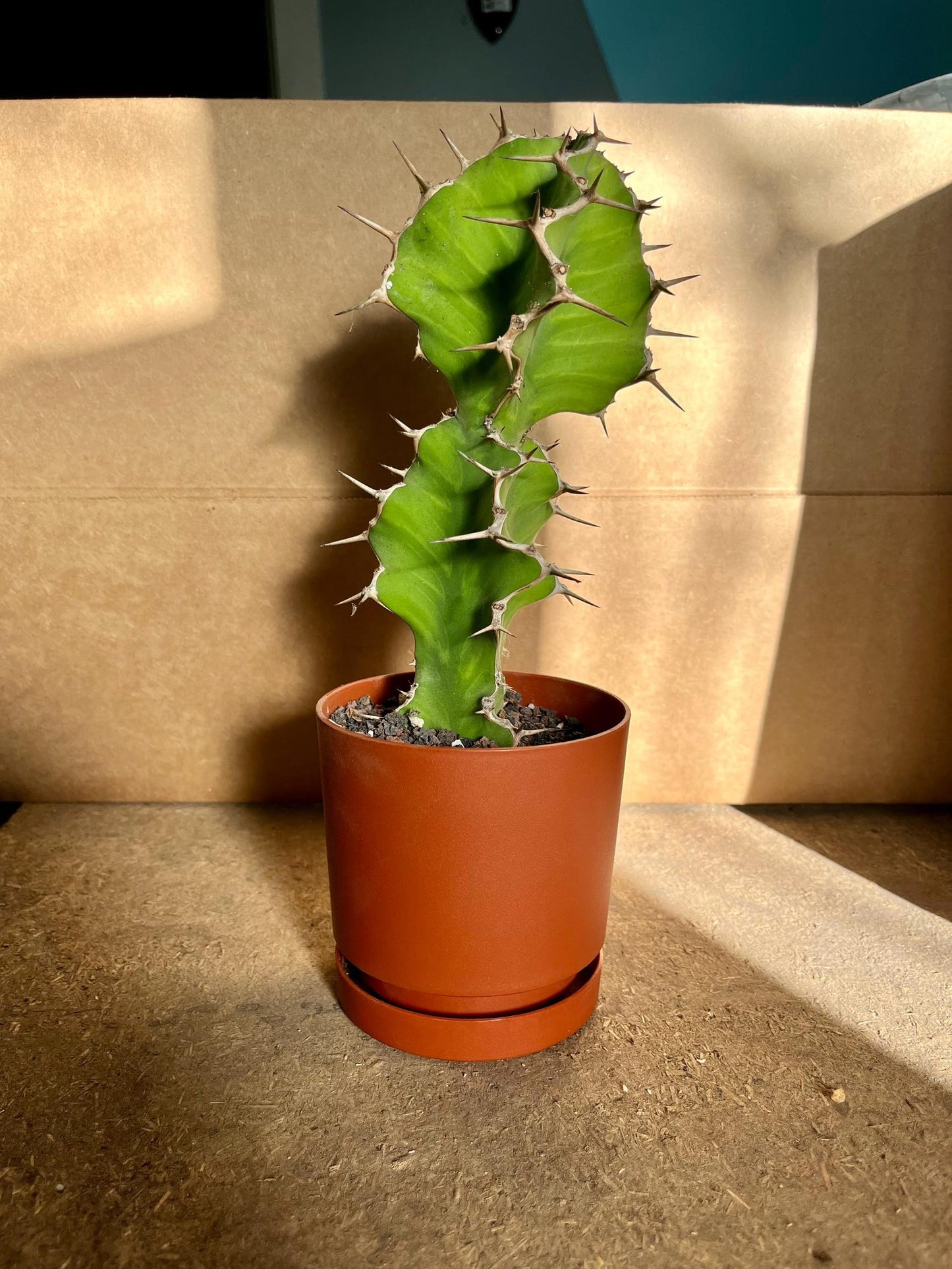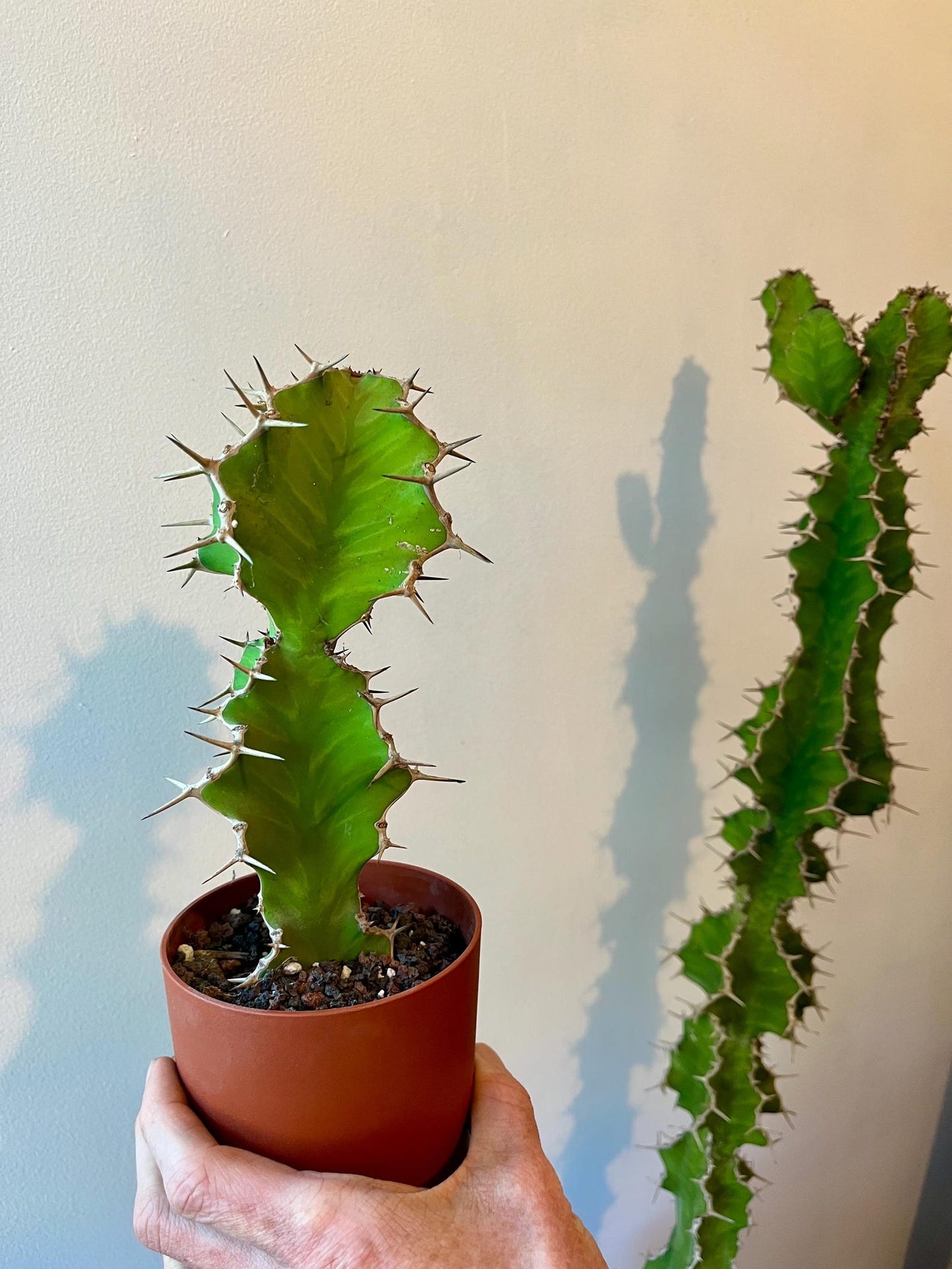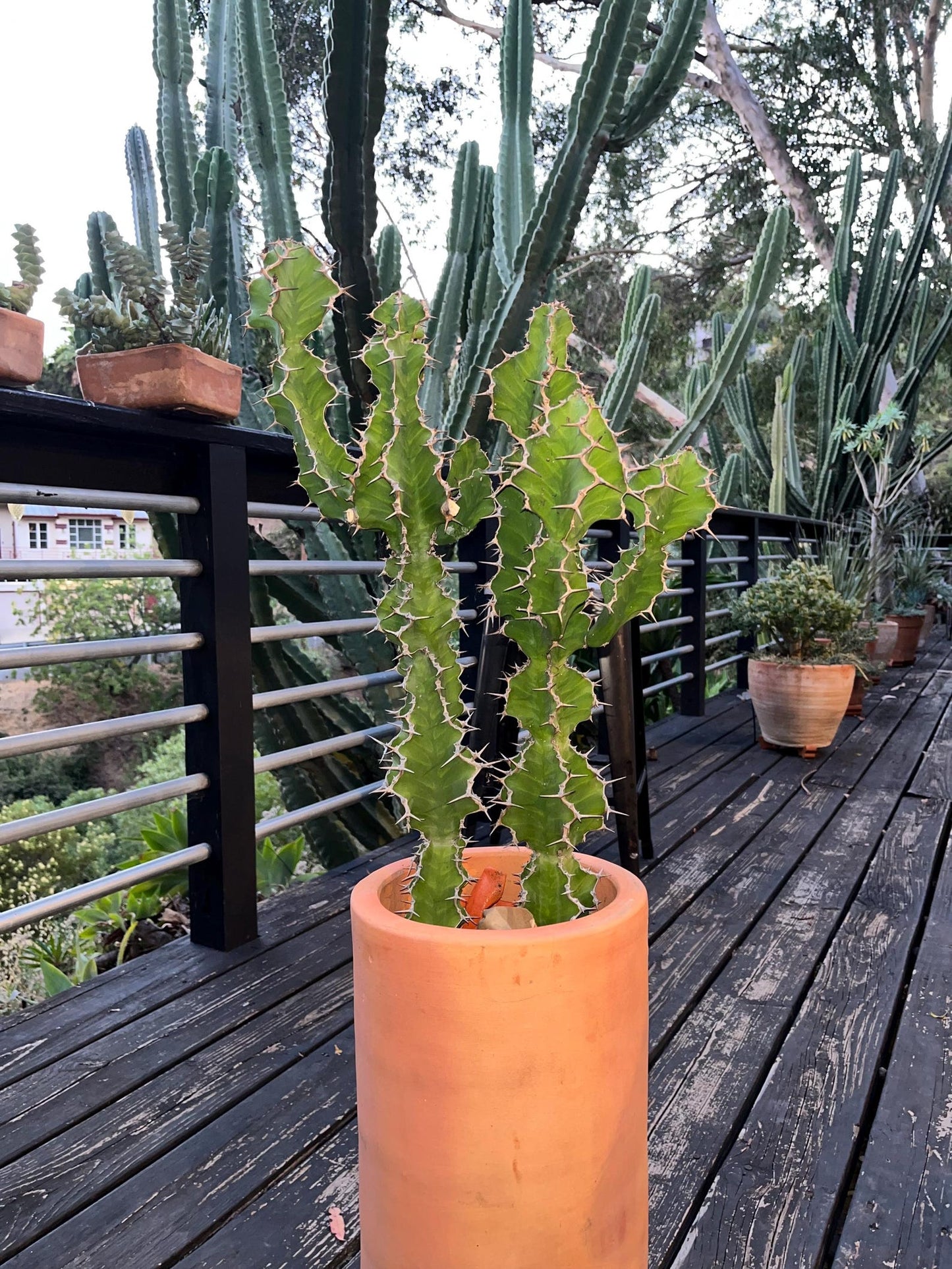Cactology Cactus Co
Euphorbia Pseudocactus Tiger Tree Cactus Cuttings | Unique Columnar Succulent | Garden Nature Gift DIY
Euphorbia Pseudocactus Tiger Tree Cactus Cuttings | Unique Columnar Succulent | Garden Nature Gift DIY
Couldn't load pickup availability
**Our shop offers free shipping on orders over $35!**
-This listing is for one live CUTTING (not rooted yet) of Euphorbia pseudocactus (Commonly referred to as Tiger Tree Cactus) in your selected size. The rooting process is quite easy and we will set you up to successfully root them! The two things you need are cactus/succulent soil and a pot with drainage (preferably clay or terracotta pot between 6-8 inches in diameter).
-Euphorbia pseudocactus is a columnar euphorbia species from the subtropical/chapperal coasts of South Africa. Characterized by its branching cactus-like form and signature chevron markings. Ectremely low maintenance plants that even the worst gardeners can grow abundantly.
-Cuttings will arrive thoroughly callused with commerical-grade rooting hormone already applied. They will be ready to plant upon arrival and your order will include detailed instructions on how to root. Exceptionally simple root you won't be disappointed with the result! We are also happy to answer any and all questions or issues you may have. Please do not hesitate to message us if this is the case.
-If allowed and under correct conditions, they form compact colonies of individual plants growing between 2-4ft tall and up to 6ft wide. They only get these sizes if planted in the ground or in an exceptionally large pot.
-Excellent candidate for container planting on a sunny windowsill, balcony or patio. They also thrive planted in-ground so long as you live in an area that does not experience freezing temperatures and with decent sun exposure.
-Sporting a distinctive and eye-catching tri-color pattern, these plants also maintain a compact and upright growing habit. These characteristics make them the perfect pop for containers or if you're working with limited garden space.
-Creates a shrub-like colony consisting of swaths serrated stems. Unique striped yellow variegation resemble that of a tiger hence their common naming
-Expect a flurry of tiny yellow flowers all along the tips of its branches in the summer months up until early fall. Bees love them and the proper horticultural name for their flowers are cyathia.
-To get good, healthy growth don't let these sit around totally dried out during it's growing season. They recieve plenty of water during this time in their natural habitat. Once it is dry water it. Just make sure you have well draining soil for these babies and they are quite forgiving.
-During winter dormancy it should be kept extra dry and will be intolerant of overwatering.
-Euphorbia react nicely to pruning. They will look scarred initially, but eventually they will push out new growth wherever they are cut. This often results in numerous new growth points. Take care when pruning, as euphorbias have toxic sap that can cause a skin rash or damage to the eyes (make sure to rinse repeatedly with water if sap gets on your skin or in your eyes)
-As columnar euphorbias grow the older tissue will transition from vibrant/smooth skin to a more rough, grayish-brown, hardened trunk. A phenomenon known as corking, the process is completely normal and common in most species in the genus as they age. This ability allows the plant to protect its central trunk and uphold the ever increasing weight it bears.
-Although Euphorbia species are often called cacti, these plants are actually more akin to succulents from the "Old World". Genetically speaking, they are not at all closely related to true cacti species (i.e. Trichocereus, Pilosocereus etc) you find in the “New World”.
-Despite having many of the same features of cacti columnar growing habit, spiky defences and being extremely drought tolerant, Euphorbia and true cacti species are not at all closely related. Incredibly, both developed strikingly similar characteristics across the globe from one another due to very similar environmental selective pressures that have shaped these plants morphology for thousands of years.
